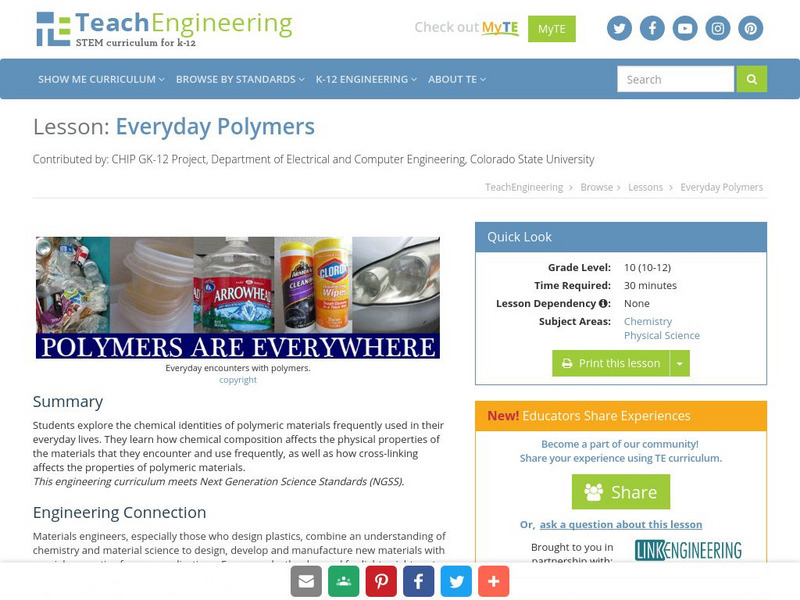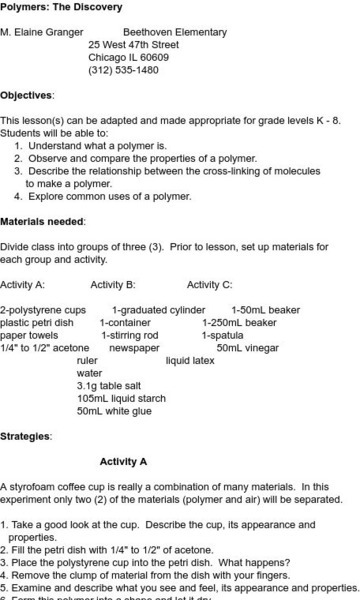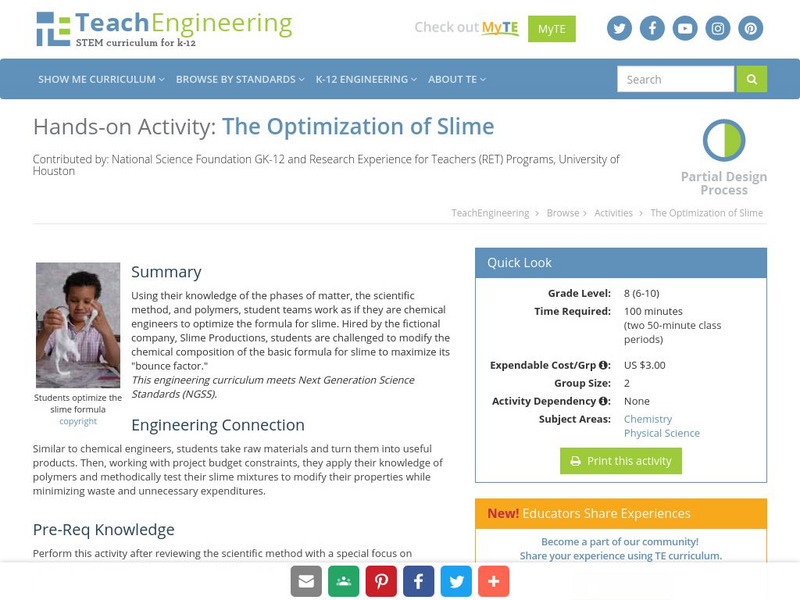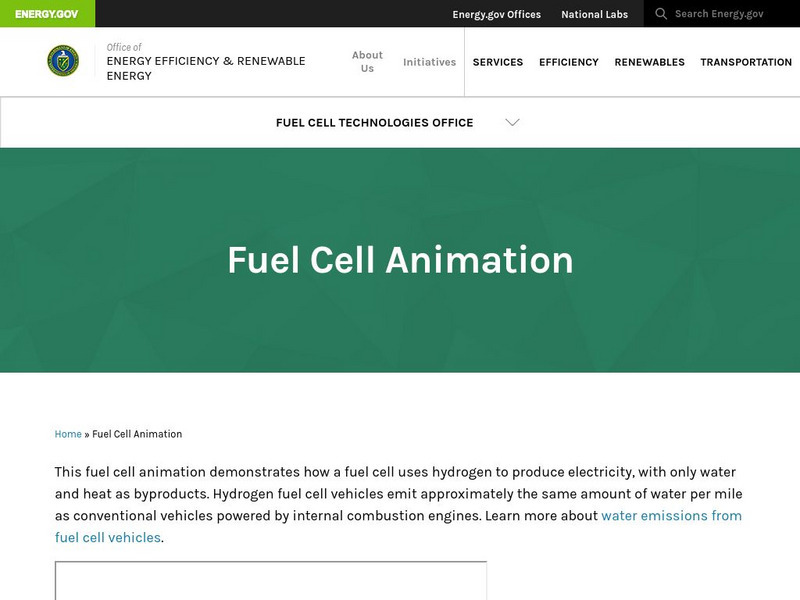Curated OER
Paper Mache Egyptian Hippos
Students learn the history behind hippos in Egyptian culture and create their own paper mache hippos.
Curated OER
Causal Patterns in Air Pressure Phenomena
Students examine why air pressure is hard to notice. They observe the height of a liquid in a tube over time and lift a table with balloons.
Curated OER
MIA Word Search Puzzle
In this literacy worksheet, middle schoolers look for the words in the puzzle that are related to the theme of the word search. Spelling skills are worked on.
Science Education Resource Center at Carleton College
Serc: Investigating Plastic Polymers: Building a Model
Young scholars will use their prior knowledge about changes of matter including physical and chemical changes from the Houghton Mifflin science curriculum. Students will create a hypothesis to test the physical properties of materials...
TeachEngineering
Teach Engineering: Focus on Fabrics: Putting Materials to Good Use
The goal is for students to understand the basics of engineering associated with the use, selection, and properties of fabrics. A wide variety of natural and synthetic fibers are used in our clothing, home furnishings and in our travel...
Science Education Resource Center at Carleton College
Serc: Investigating Polymers: Comparing Two Liquid Glue Based Polymers
In this experiment, students will work in small groups to create two different polymers, similar to Flubber and Silly Putty, using Elmer's glue, liquid laundry starch, and Borax. They will then compare the properties of the two polymers....
Science Education Resource Center at Carleton College
Serc: Mn Step: Where in the World Can I Find Plastic Polymers. Why Are They Used?
An investigation of where plastic polymers can be found in everyday life. After identifying them, students test them to learn about their properties, then try some online activities.
Science Education Resource Center at Carleton College
Serc: Polymers & Plastics: Classification & Models
Students will use their prior knowledge about changes of matter including physical and chemical changes to examine and categorize various types of plastics (polymers). They will identify how their chemical properties allow them to have...
Chiral Publishing
Chiral Publishing: An Introduction to Chemistry: Organic Chemistry/biochemistry/synthetic Polymers Study [Pdf]
Use this site to get an overview of organic chemistry, biochemistry, and synthetic polymers. Also includes an answer key to the chapter review questions and links to online quizzes.
TeachEngineering
Teach Engineering: Everyday Polymers
Students explore the chemical identities of polymeric materials frequently used in their everyday lives. They learn how chemical composition affects the physical properties of the materials that they encounter and use frequently, as well...
Other
Polythene: Production and Properties & Uses
A wonderful site for information on polythene. Contains a table of information for high density and low density polyethylene (LDPE and HDPE) which tells melting point, uses, chemical properties, and more for each. Also contains the...
Other
American Chemistry Council: History of Polymers & Plastics for Teachers
This resource presents a teacher guide that offers information on the history, structure, characteristics, forms, and common uses of plastics and polymers.
Science Education Resource Center at Carleton College
Serc: Plastic Polymers: Investigating Their Flexibility
Students will use their prior knowledge about changes of matter to develop a hypothesis to test the physical properties of materials such as plastic (polymers) and how its chemical properties allow it to have unique physical properties.
Other
Educational Innovations: Diaper Polymer Activities [Pdf]
What can you do with diaper polymer? Check out these six quick student experiments involving the chemical used in diapers.
York University
Chemistry Hall of Fame: Polyethylene a Plastic of Many Uses
Background information on the discovery of polyethylene is found on this website. Also lists polyethylene's many uses.
TeachEngineering
Teach Engineering: Creepy Silly Putty
Students learn about viscoelastic material behavior, such as strain rate dependence and creep, by using silly putty, an easy-to-make polymer material. They learn how to make silly putty, observe its behavior with different strain rates,...
Science Struck
Science Struck: Properties and Uses of Polypropylene
Discusses properties, uses, and facts about polypropylene.
Museum of Science
Museum of Science and Industry: Online Science: Activities: Make Slime
Step-by-step instructions, with photos, of how to create slime made of polymer chains using Borax and white glue.
Maryland Science Center
Maryland Science Center: Bouncy Balls [Pdf]
Use simple materials in a chemical reaction to create a bouncy ball, and learn about long-chain polymers.
Science and Mathematics Initiative for Learning Enhancement (SMILE)
Smile: Polymers: The Discovery
A simple lab activity which introduces the field of polymer chemistry. Includes the use of polystyrene in a neat reaction.
TeachEngineering
Teach Engineering: The Optimization of Slime
Using their knowledge of the phases of matter, the scientific method, and polymers, student teams work as if they are chemical engineers to optimize the formula for slime. Hired by the fictional company, Slime Productions, students are...
US Department of Energy
U.s. Department of Energy: Fuel Cell Technologies Program: Fuel Cell Animation
A series of animated illustrations show how a polymer electrolyte membrane fuel cell works. PEM fuel cells are the most common type used in flex-fuel vehicles.
University of Pennsylvania
University of Pennsylvania: Solid State Chemistry: Describing Crystalline Solids
This site contains in-depth information on crystalline solids. Includes basic concepts, pictures, learning graphs, and useful tools.
TeachEngineering
Teach Engineering: Flocculants: The First Step to Cleaner Water!
Students experience firsthand one of the most common water treatment types in the industry today, flocculants. They learn how the amount of suspended solids in water is measured using the basic properties of matter and light. In...





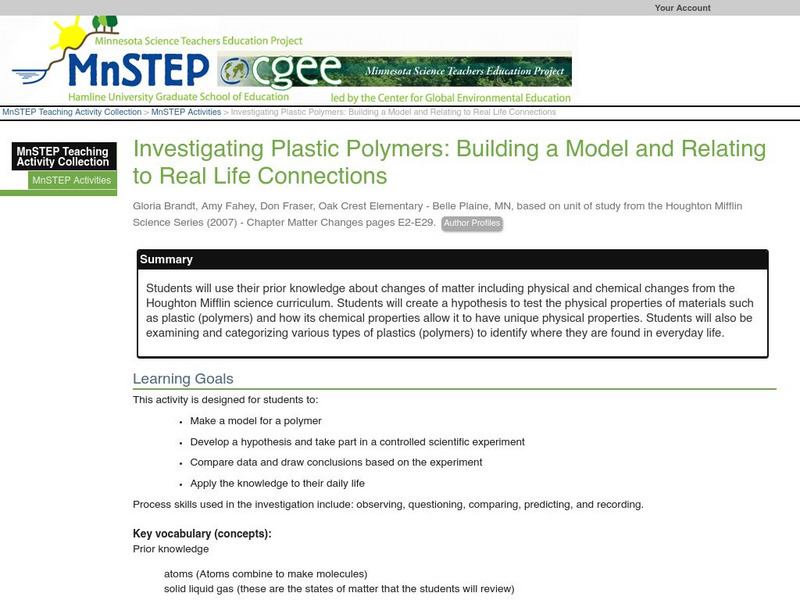




![Chiral Publishing: An Introduction to Chemistry: Organic Chemistry/biochemistry/synthetic Polymers Study [Pdf] eBook Chiral Publishing: An Introduction to Chemistry: Organic Chemistry/biochemistry/synthetic Polymers Study [Pdf] eBook](https://d15y2dacu3jp90.cloudfront.net/images/attachment_defaults/resource/large/FPO-knovation.png)
